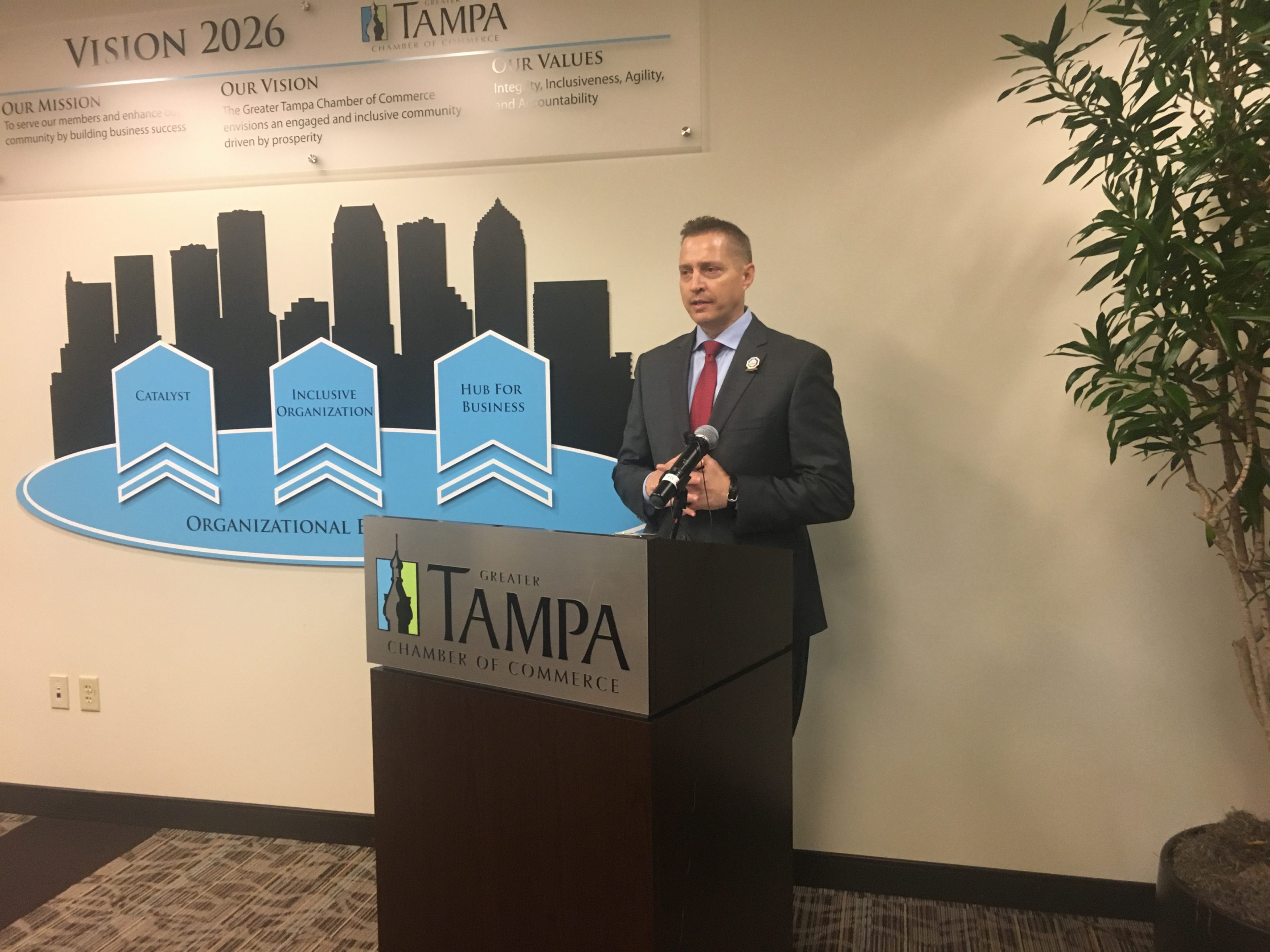
The Greater Tampa Chamber of Commerce is backing a one-half percent sales tax referendum to better fund Hillsborough County Schools, its board voted Thursday unanimously.
If voters approve the referendum on Nov. 6, the sales tax will raise $1.3 billion over ten years. The Hillsborough County Schools district needs money to fund major repairs to its facilities including overhauling 203 out of 230 air conditioning systems in Hillsborough County schools.
“This investment would mean an expansion of all the things that power our business community: preparing a talented workforce, attracting high-quality jobs, increased property values, boosting our economy through significant local spending on repairs and construction work and generally improving the quality of life in Hillsborough County,” said Greater Tampa Chamber of Commerce Board Chair Steve Bernstein.
Hillsborough County Schools Superintendent Jeff Eakins said the new funding is necessary because the student population is expanding faster than the district can keep up with needs.
“We took a look at all of our contiguous school districts around us. All of those local communities have said that for us to really show everyone in this community that we care we know we’re going to have to something locally,” Eakins said.
Eakins is also a board member on the Tampa chamber.
The vote follows another unanimous chamber endorsement for a 1 percent sales tax increase to fund transportation and transit improvements in Hillsborough County. If both are approved, consumers in Hillsborough County will pay 8.5 percent in sales tax, which would be (by far) the highest sales tax in the state.
“It’s not lost on us,” Bernstein said. “I would say in many ways, especially on the transportation side, it represents a user fee. The reality is no one is going to do this for us.”
Bernstein and mother members of the chamber went to Washington D.C. earlier this year and spoke with high ranking elected officials and staffers about the challenges, particularly with transportation, facing Hillsborough County.
“They all said the same thing. Until you show as a community that you’re willing to invest in yourself [federal funding is] not likely to happen,” Bernstein said.
He noted the board considered the tax implications considerably during their discussions on whether to support the two ballot initiatives. Several considerations reassured board members including that the tax burden will be shared with tourists spending money during trips to the county.
The tax would also not apply to most necessities like food and medicine.
Supporters of the referendums have worried the two would work against each other; that voters would be wary of approving two tax increases and pit one against the other.
But Eakins said the school district is backing both initiatives.
“We know that these two things go together extremely well because of how we place 215,000 students and their parents and employees out on the road every single day,” Eakins said. “We know that they have to get from point A to point B in a more rapid time frame. We know that stresses out families in the morning. It stresses out kids in the morning. Everyone comes to work stressed because of those issues.”
In addition to air conditioning repairs, the education referendum would also fund replacing 63 roofs on school properties, $139 million for miscellaneous repairs, $25 million for classroom technology, $23 million for safety, security and overcrowding reduction and $500,000 for each school within the district to use to meet their specific campus needs.
The chamber estimates the education referendum tax would cost the average family about $63 per year.



